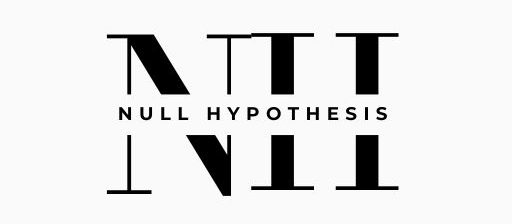- 3 Mutual Funds to Boost Your Portfolio on Soaring Retail Sales
- The 10 Best Fund Managers of 2024 and Their Stock Picks for 2025
- Is John Hancock2 Capital Appreciation 1 (JICPX) a Strong Mutual Fund Pick Right Now?
- 6 Best Investments For Beginners: A Complete Guide
- Stock and Share Market News, Economy and Finance News, Sensex, Nifty, Global Market, NSE, BSE Live IPO News
ETMutualFunds’ best mutual fund SIP portfolios are meant for three different individual risk profiles: conservative, moderate and aggressive. We have also considered three SIP baskets – between Rs 2,000-5,000, between Rs 5,000-10,000 and above Rs 10,000 – while creating these portfolios. Take a look at our recommended portfolios.
Here are our recommended SIP portfolios for January 2025:
Bạn đang xem: Best mutual fund SIP portfolios to invest in January 2025
Recommended portfolio for conservative investors:
Recommended portfolio for moderate investors:
 ET Online
ET OnlineRecommended portfolio for aggressive investors:
 ET Online
ET OnlineMethodology for equity funds:
ETMutualFunds has employed the following parameters for shortlisting the equity mutual fund schemes.
1. Mean rolling returns: Rolled daily for the last three years.
2. Consistency in the last three years: Hurst Exponent, H is used for computing the consistency of a fund. The H exponent is a measure of randomness of NAV series of a fund. Funds with high H tend to exhibit low volatility compared to funds with low H.
i) When H = 0.5, the series of returns is said to be a geometric Brownian time series. This type of time series is difficult to forecast.
ii) When H is less than 0.5, the series is said to be mean reverting.
iii) When H is greater than 0.5, the series is said to be persistent. The larger the value of H, the stronger is the trend of the series
3. Downside risk: We have considered only the negative returns given by the mutual fund scheme for this measure.
X =Returns below zero
Y = Sum of all squares of X
Z = Y/number of days taken for computing the ratio
Downside risk = Square root of Z
Xem thêm : Is Kinetics Small Cap Opportunity Adviser A (KSOAX) a Strong Mutual Fund Pick Right Now?
4. Outperformance: It is measured by Jensen’s Alpha for the last three years. Jensen’s Alpha shows the risk-adjusted return generated by a mutual fund scheme relative to the expected market return predicted by the Capital Asset Pricing Model (CAPM). Higher Alpha indicates that the portfolio performance has outstripped the returns predicted by the market.
Average returns generated by the MF Scheme =
[Risk Free Rate + Beta of the MF Scheme * {(Average return of the index – Risk Free Rate}
5. Asset size: For Equity funds, the threshold asset size is Rs 50 crore.
Methodology for debt funds:
Xem thêm : 3 American Beacon Mutual Funds for Solid Returns
1. Mean rolling returns: Rolled daily for the last three years.
2. Consistency in the last three years: Hurst Exponent, H is used for computing the consistency of a fund. The H exponent is a measure of randomness of NAV series of a fund. Funds with high H tend to exhibit low volatility compared to funds with low H.
i) When H = 0.5, the series of returns is said to be a geometric Brownian time series. This type of time series is difficult to forecast.
ii) When H is less than 0.5, the series is said to be mean reverting.
iii) When H is greater than 0.5, the series is said to be persistent. The larger the value of H, the stronger is the trend of the series
3. Downside risk: We have considered only the negative returns given by the mutual fund scheme for this measure.
X =Returns below zero
Y = Sum of all squares of X
Z = Y/number of days taken for computing the ratio
Downside risk = Square root of Z
4. Outperformance: Fund Return – Benchmark return. Rolling returns rolled daily is used for computing the return of the fund and the benchmark and subsequently the Active return of the fund.
5. Asset size: For Debt funds, the threshold asset size is Rs 50 crore.
Methodology for hybrid funds:
Xem thêm : 3 American Beacon Mutual Funds for Solid Returns
1. Mean rolling returns: Rolled daily for the last three years.
2. Consistency in the last three years: Hurst Exponent, H is used for computing the consistency of a fund. The H exponent is a measure of randomness of NAV series of a fund. Funds with high H tend to exhibit low volatility compared to funds with low H.
i) When H = 0.5, the series of returns is said to be a geometric Brownian time series. This type of time series is difficult to forecast.
ii) When H
iii) When H>0.5, the series is said to be persistent. The larger the value of H, the stronger is the trend of the series
3. Downside risk: We have considered only the negative returns given by the mutual fund scheme for this measure.
X = Returns below zero
Y = Sum of all squares of X
Z = Y/number of days taken for computing the ratio
Downside risk = Square root of Z
4. Outperformance
i) Equity portion: It is measured by Jensen’s Alpha for the last three years. Jensen’s Alpha shows the risk-adjusted return generated by a mutual fund scheme relative to the expected market return predicted by the Capital Asset Pricing Model (CAPM). Higher Alpha indicates that the portfolio performance has outstripped the returns predicted by the market.
Average returns generated by the MF Scheme =
[Risk Free Rate + Beta of the MF Scheme * {(Average return of the index – Risk Free Rate}
ii) Debt portion: Fund Return – Benchmark return. Rolling returns rolled daily is used for computing the return of the fund and the benchmark and subsequently the Active return of the fund.
5. Asset size: For Hybrid funds, the threshold asset size is Rs 50 crore
(Disclaimer: past performance is no guarantee for future performance.)
Nguồn: https://nullhypothesis.cfd
Danh mục: News






